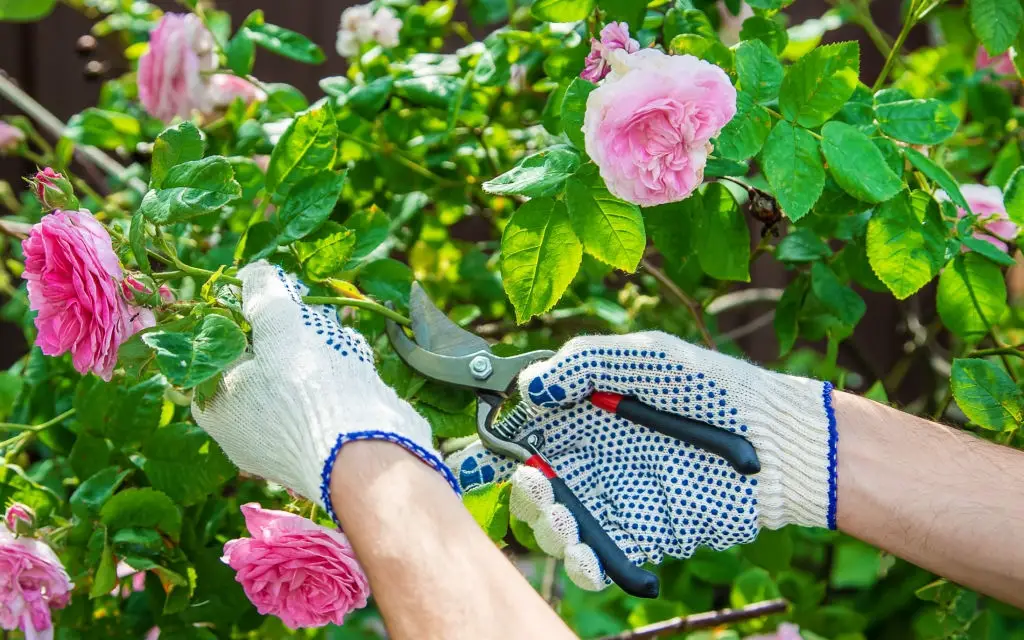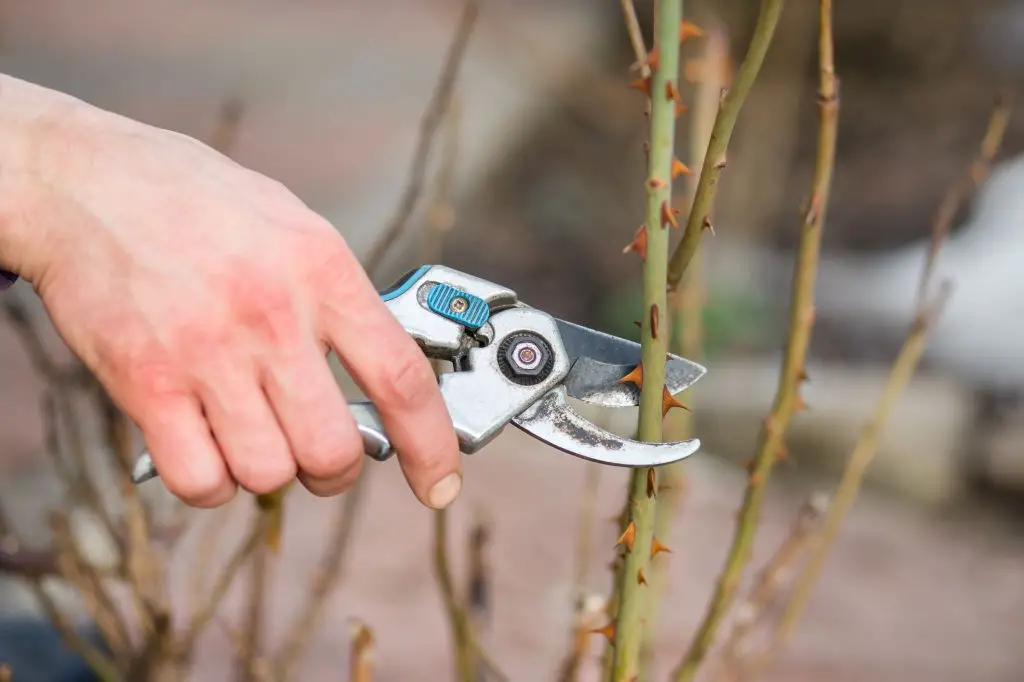Rose bushes can be fantastic to any garden because they add some color to the entire yard. However, some rose bushes tend to be leggy in that they look so tall due to how they stopped developing flowers on the lower end of the stems of each rose. So, in that case, how do you trim leggy rose bushes?
The best way to trim leggy rose bushes is to notch them. Notching involves cutting into the bark right above a node. What happens here is that the cut will allow the plant to transfer nutrients in that area to revitalize the plant and to allow it to grow new flowers in that spot.
Before you rush into trying to hide the leggy stems with other plants or into cutting the taller rose bushes, you should try out notching first because this can be an effective way of promoting new growth in your roses. That way, you don’t have to essentially cut your leggy rose bush but instead allow them to become bushier with the growth of new flowers.
How to trim leggy roses?
Growing rose bushes can make an entire garden look better than it already is. The roses add a touch of color to an otherwise monotonous garden. This is why it isn’t uncommon for different people to grow rose bushes in their gardens.
But the problem that a lot of people often encounter when it comes to their rose bushes is that the roses tend to be leggy. Leggy means that these roses look too precise because they stopped growing flowers on the lower parts of the stem. The taller will look taller than it usually is to the point that the roses will look like trees. So, how do you trim leggy rose bushes?
Essentially, you don’t “trim” leggy rose bushes because this isn’t the best way to remedy the situation. Instead, we recommend that you fix the issue of leggy roses by notching them. But how do you notch roses?
When you are notching roses, you identify the dormant buds on the lower stems. These buds can grow flowers but are simply dormant due to how the plant focuses on the flowers at the top end. To identify the dormant buds, you need to use your fingers and then feel along the stem to find a bump, which is actually a node that can still produce new growth.
When you are notching the roses, you can essentially force the dormant buds to wake up and grow into leaves and flowers. You do so by slicing into the bark about half of an inch just above the nodes. Make sure that you completely cut through the bark right above the bud but avoid removing the bark around the stem because this will cause the entire branch to die.
Notch only above buds that actually point outward so that you can be sure that the rose still maintains its healthy look when new branches do indeed grow out of the buds. Meanwhile, branches that grow inward will have to be removed because they tend to bother with the air circulation of the entire plant. That’s why you shouldn’t try to promote growth in such buds.
Why is it better to notch roses?
Now that you know how to notch roses, you might be wondering why it is better to notch these plants instead of trimming them.
Leggy rose bushes actually show you how plants are amazing at adapting to any situation. You need to know about plants because they don’t grow tall just because they want to. Instead, they have to grow tall because they need to do so, especially when competing against other neighboring plants for sunlight. The taller the plant is, the more likely it will absorb more sun to the expense of its neighbors.
So, going back to your rose bush, as the roses grow, what happens here is that the leaves tend to receive less sunlight and are now less likely to photosynthesize. The entire plant will now focus all of its energy and resources towards the top of the plant because that is the part that gets the most sunlight. Doing so will leave all of the other buds dormant and unable to grow into leaves and flowers.
However, notching will allow you to force the plant to revitalize these buds. This usually happens in the wild when an animal eats the top of the plant. The plant, because it lost its top, will now try to bring life to the dormant buds by diverting the nutrients and water that it was previously focusing on the top.
So, by notching the roses, you are essentially interrupting the flow of nutrients to the top of the plant because you are making the plant think that you cut the entire branch. As such, the plant will now be forced to grow the previously dormant buds. This will allow you to turn your leggy rose bushes into plumper and fuller bush that no longer looks too leggy.
What are the best tips for pruning tall rose bushes?
On top of notching the lower branches to promote new growth, there are other things that you may want to do when it comes to your taller rose bushes.
The first thing you need to do is clean the top of the plant, especially if the plant tends to lean over to one side. If you want to remove a flower to make the plant look better or if you’re going to display the plant in a vase, you can try to cut up to half of the stem’s length to make sure that the rose still looks clean and tidy.
The most important thing to avoid is cutting the rose all the way down because this prevents them from producing enough energy for them to survive since you’ll be cutting away the leaves. Doing so will force the plant to rely on its roots solely.



